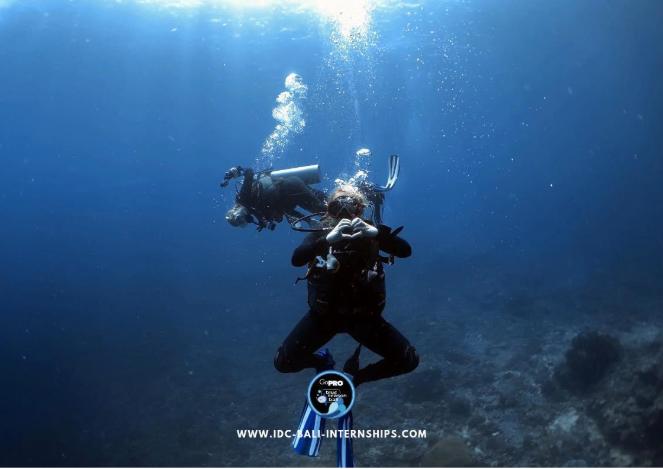How big is your SMB?
Is yours a big one ? Can your Captain spot it in bad weather ?

Surface Markers Buoys (SMBs), also known as ‘safety sausages’, are a vital piece of SCUBA safety equipment. Every diver should carry one, and every PADI Divemaster, Assistant Instructor and Instructor must carry one. PADI Instructors must teach this skill to Open Water students and during Divemaster courses. They come in a variety of different colours, shapes, sizes and we even have different methods for using them.
SMBs make it easy to be spotted on the surface…
Some SMBs are made from plastic, and are designed for use on the surface only. They are normally inflated by putting one end under water and purging the second stage inside to inflate it. These inflated tubes are normally about 2m (6 feet) tall. When not in use, safety sausages roll up and fit in a BCD pocket. Commercial boat dive operations, especially at offshore reefs or areas known for strong currents or mercurial weather, may require divers to carry safety sausages at all times as a precaution.
A delayed surface marker buoy (dSMB) is similar to a surface marker buoy, but is deployed whilst the diver is still submerged and generally only towards the end of the dive. These marker buoys are made of a stronger, fabric material so they don’t burst as the air expands during their journey to the surface. The buoy marks the diver’s position underwater so the boat safety cover can locate the diver even though the diver may have drifted some distance from the dive site while doing safety stops or decompression stops. A reel and line, or just a 6m line, is used to keep the buoy upright on the surface.
There are at least four methods of keeping the air in the inflated SMB. The buoy can be:
- open ended (preferably with small independent weight or line to keep the opening submerged to prevent the air escaping);
- open ended self-sealing buoys (the air in the buoy expands as the buoy ascends sealing a neck at the bottom of the buoy);
- sealed, with an inflation valve and a pressure relief valve;
- sealed, with a built in air supply and a pressure relief valve.
Divers of some training organisations carry two differently coloured deco buoys underwater so that they can signal to their surface support for help and still remain underwater decompressing. For example, in some circles in Europe, a red buoy indicates normal decompression and a yellow buoy indicates a problem, such as shortage of gas, which the surface support should investigate and resolve. Although in other circles, two buoys (any colour) up one line means the same, currently the protocol is not universally accepted even within Europe.
Personally, I like to deploy my SMB on every dive from depth. Using a reel, I can deploy my SMB from 10m+, before ascending to 5m for my safety stop. I find this especially useful if diving in strong currents, in areas with heavy boat traffic or when diving with student divers.
Learning to use an SMB is an important skill in diving, and an essential one for all PADI Pros. As a diver, do not rely on your Divemaster to do this for you, as you never know when you could become separated from a group underwater. The PADI SMB Diver Distinctive Specialty course is a great way of getting to grips with this skill. During this course you will get to use different types of SMB and will use different methods of deployment, and will help you become a safer diver !
As a PADI Instructor you are required to teach SMB or dSMB use to your Open Water students, and during Divemaster training, so it’s important that you have mastered this skill. Taking the SMB Diver Specialty Instructor Training Course at Blue Season Bali will ensure you know how to use a variety of these safety devices so you can pass the information on to your students and help them dive safely in the future. Why not learn how to teach this course as part of your MSDT Internship ?
If you’d like to add this skill to your diving repertoire, or are an instructor who’d like to gain the SMB Diver Specialty Instructor rating to be able to teach this useful course, then drop us an e-mail, or use our contact form, to learn more…



